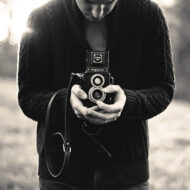Blending Tools for Drawing

There are a number of both store-bought and household items you can safely use on your drawings. (Photo Credit: Myra Naito)
*This post contains Amazon Affiliate links. As an Amazon Associate, I may earn from qualifying purchases.
When it comes to blending tools for drawing, you can literally use just about anything handy. You don’t have to have legit store-bought tools, but you can if you like. None of them are really that expensive.
Let me start off with the one you should avoid.
Your fingers. If you’re just scratching away, sketching in a sketchbook, maybe you can. But if you intend for your drawings to last as long as possible, I’d steer clear of flesh as a blending tool. You see, your skin produces oils and sweat. These oils will yellow your paper over time. That’s why blending tools for drawing were invented…to keep your paper-staining-flesh-oils off the paper!
On to what you can use…
Store-bought items:
- A stump is “a cylindrical drawing tool, usually made of soft paper that is tightly wound into a stick and sanded to a point,“ sometimes on both ends. It can be used with graphite (pencil) or charcoal, pastels, or even Conte crayons. They’re great at blending within an area that already has value in place. But they’re also handy for moving that medium in a gradation outside of that area. Since a stump is pointed, they can even be used as a drawing tool. Use a smaller stump for smaller areas and larger stumps for larger areas. Also, it’s best to blend in small circular motions rather than back and forth to avoid those annoying start and stop end points. Some sets come with a sanding block to refresh your stump’s point.
- Paint brush. Yes, a paint brush. Obviously, if you’ve ever shopped for paint brushes before, you know there’s a huge variety and shapes of brushes. My preference for blending is the filbert brush as it is tapered and has a bit of an edge to the bristles, which is great for staying in the lines so to speak. As far as a blending tool for drawing, this is absolutely fantastic for larger areas and produces a super soft blend. It’s also great for adding a soft blend where there isn’t any graphite at all. If say, you have darker graphite (or pastel, etc.) on a spare sheet of paper or a tub of graphite powder, you can dip the brush into it, knock off the excess, and then add it to your your drawing for a very soft, smooth value.
Household items:
- A tissue or paper towel are super handy. If you’re using tissue, make sure it’s not the kind with added moisturizers and these can yellow the paper over time. Also, if you’re using paper towels, make sure it’s not too textured as these can leave unwanted patterns on your drawing. Keep the majority of the tissue or paper towel in the palm of your hand and have your fingertip wrapped in the section you’ll be blending with. Again, use soft circular motions for a smooth blend. This is great for larger areas.
- A cotton swab (Q-tip in the U.S.) is another handy household item. The bonus is, they’re super cheap and super easy to use. As with the other items already mentioned, small circular motions for this as well. This is fantastic for smaller areas.
- Makeup Cotton Pads are also fairly cheap. The pack I get at Target is less than $5 for 200 pads. They’re 100% cotton, so no oily residue on my paper, which means no yellowing over time. You can find packs off 500-600 on Amazon for less than $10. I use these in larger areas of my drawing.
In all honesty, I’ve even used my t-shirt wrapped around my finger in a pinch. A clean black t-shirt.
Whatever works that won’t leave any kind of residue on my paper is fine with me as long as it gets the job done. Much of what you learn with drawing is done through experimentation. So too, blending tools for drawing will be a matter of experimentation and preference for what works best or your type of shading. You can really get away without having to step foot into an art store for special blending tools. Who doesn’t want to go into an art store though?
But, always, always experiment on another sheet of paper similar to what you’re drawing on and never directly on your drawing itself. You’ll want a similar surface texture and color (not all paper is the same white or the same texture). It’s always worth the time to experiment. Ruining a drawing, or even having to take the time to fix a drawing absolutely sucks, especially when it could have been avoided.
This blog contains Amazon Affiliate links. As an Amazon Associate, I may earn from qualifying purchases.



Recent Comments